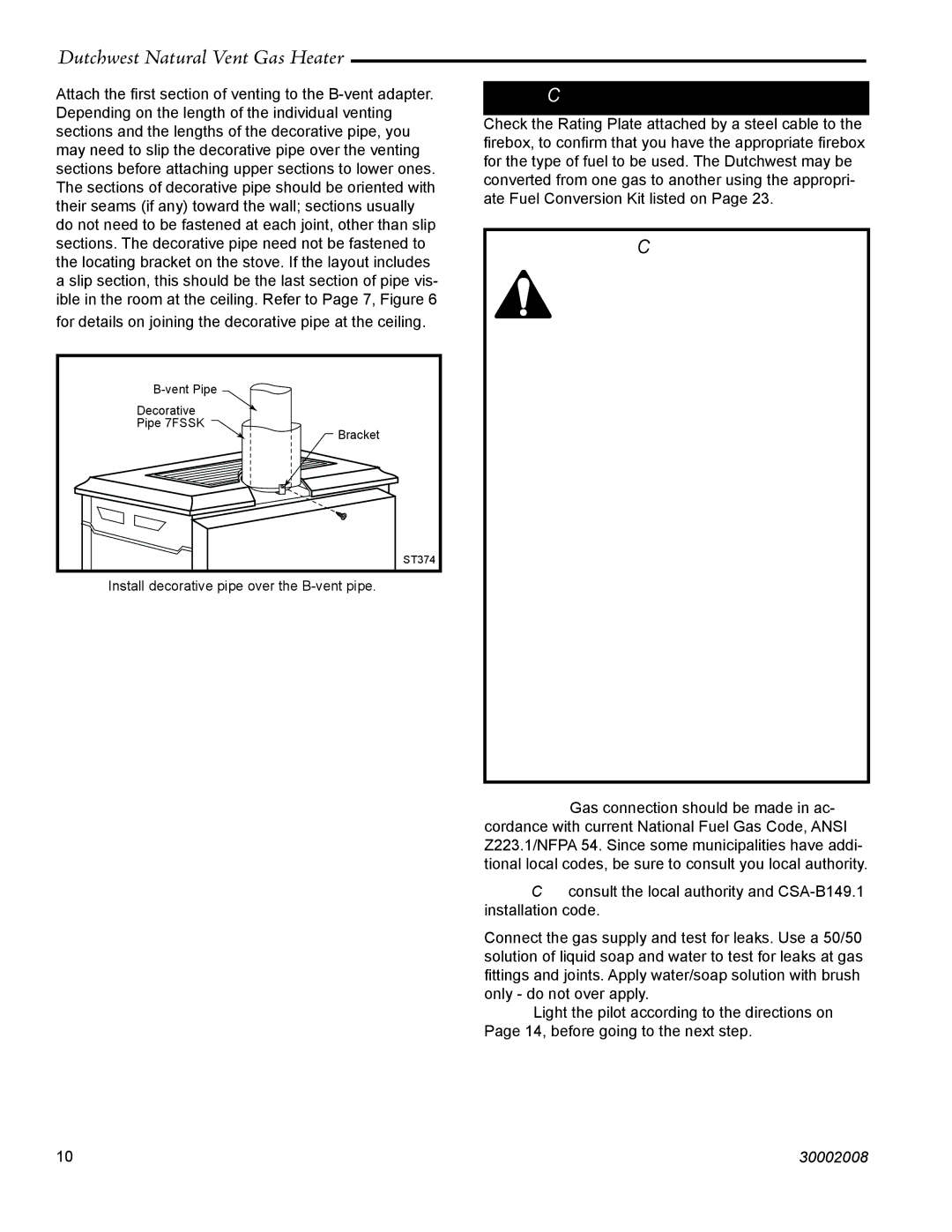2467, 2468 specifications
Vermont Castings is known for producing high-quality wood stoves and fireplaces, and among their popular offerings are models 2468 and 2467. These models are lauded for their efficient heating, aesthetic appeal, and innovative technology, making them a favorite for both traditionalists and modern homeowners alike.One of the standout features of the Vermont Castings 2468 and 2467 models is their exceptional heating capacity. The 2468 can heat spaces up to 2,200 square feet, making it an ideal choice for larger homes, while the 2467 is tailored for medium-sized spaces, comfortably heating up to 1,800 square feet. This makes both models versatile options for various home sizes and layouts.
Both models utilize Vermont Castings’ patented technology, which includes a unique air wash system that keeps the glass clean, providing an unobstructed view of the flames. This enhances the cozy ambiance characteristic of a wood-burning stove, allowing homeowners to enjoy the natural beauty of the fire. Additionally, the stoves feature advanced combustion technology, allowing for a longer burn time and improved efficiency. This means fewer trips to the woodpile and less maintenance overall.
The design of the 2468 and 2467 is another highlight. Available in various finishes and styles, these stoves can complement any decor, from rustic to contemporary. The cast-iron construction not only provides durability but also helps with heat retention, ensuring warm air is released evenly throughout the space.
Furthermore, these models come equipped with user-friendly controls that allow for easy adjustment of combustion levels, ensuring optimal performance and fuel savings. The efficient burn helps in reducing emissions, making both stoves environmentally friendly options that comply with stringent EPA standards.
Homeowners can also benefit from the additional features such as a built-in blower in the 2468 that helps circulate hot air, increasing overall heating efficiency. Both models are designed for easy installation, and with an extensive warranty, Vermont Castings ensures peace of mind for users.
In conclusion, the Vermont Castings 2468 and 2467 wood stoves are emblematic of quality craftsmanship, efficient heating technology, and elegant design. They are excellent choices for those seeking a reliable and attractive heating solution in their home.

